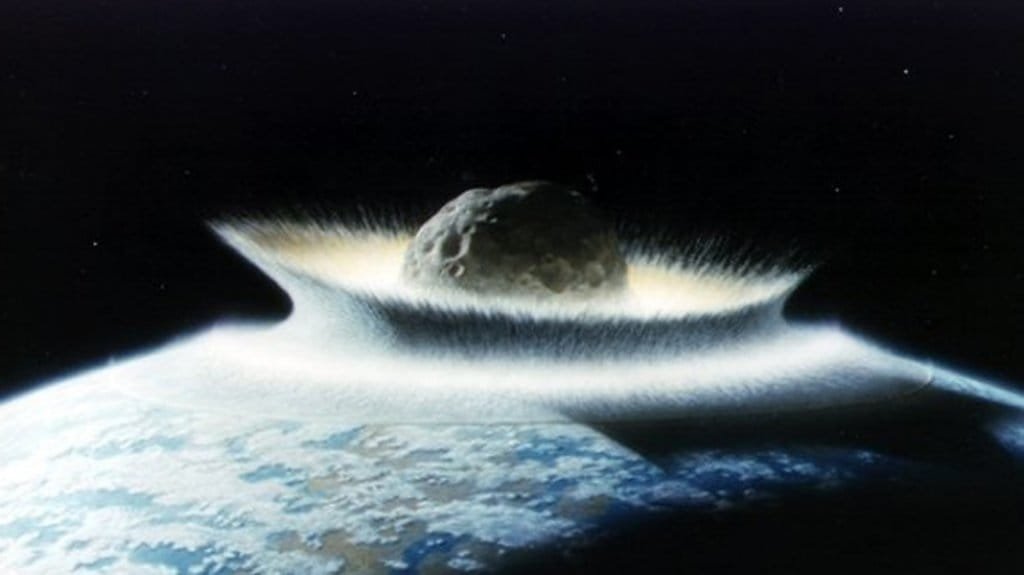Four Asteroids on Collision Course with Earth

To indicate Asteroid Day, here are just four space stones on a collision course with our planet. The United Nations fears the potential for an asteroid smashing into a densely populated region is not being taken seriously, therefore it designated June 30 as International Asteroid Day to increase awareness about the potentially devastating occurrence.
The date has been selected because the greatest asteroid effect in recorded history took place over Tunguska, Russia on this afternoon in 1908 when an huge asteroid burst and destroyed tens of thousands of acres of forest. To indicate the occasion, below are four asteroids that may wallop in to Earth.
Using its 900-meter diameter, even if this tremendous rock hits our world the effect would be catastrophic. It is currently hurtling through the solar system in almost 70,000kph and is becoming nearly 30km nearer to Earth each second.The European Space Agency (ESA) has set it in 2nd position on its own’Risk List’ for Near-Earth Asteroids.
The orbit of the small world is undependable but it’s called to have a chance of hitting Earth midway during this century.Experts warn that 1979 XB could unexpectedly come a good deal closer to Earth, given just a very small variation in its own orbit. Its next predicted strategy of Earth is place to emerge in 2024. It is now over 200 million km away but has half a kilometer closer each second.
It regularly moves Earth on its orbit but also the newest radar and optical information indicates we are in for a close shave as it blazes beyond our world at a distance of just 30,000 kilometers in 2029. That can be less than a tenth of the space to the Moon.It will fly Earth at mid-October this season as it’ll pass us in a safe distance of about 30 million km. If Apophis failed burst into Earth that the impact is calculated to be comparable to about 15,000 atomic weapons detonating at the same time.
2010 RF12
This asteroid retains the dubious honour of topping the Sentry List (Earth Impact Tracking system) along with the ESA impact threat record. It is now around 215 million km from Earth and is traveling at a rate of 117,935kph.The threat from this asteroid is not prediction to emerge until the close of the century if it is calculated to emerge up to 40 times closer than the Moon. Fortunately it weighs, a comparatively little, 500 tons and is approximately seven meters . The effect is predicted to be marginally less than the meteor that struck on the Russian city of Chelyabinsk in 2013, which ruined thousands of buildings and wounded countless individuals.2010 RF12 is place to pass on Earth on August 13, 2022 if astronomers across the globe will train their telescopes on the thing to find out as much as you can about it and its own trajectory.
2000 SG344
2000 SG344 a part of a team known as the Aten Asteroids, that have orbits very closely with Earth’s. It’s called to have a prospect of effect in another three or four years. With only a 50-meter diameter, it is relatively little but is still two times as large as the Chelyabinsk meteor which caused so much harm six years ago.It’s now traveling through space at more than 112,000kph and will be getting 1.3km nearer to Earth every minute. It also travels around sunlight in nearly the specific same moment as Earth, 353 times versus Earth’s 365 days. This provides astronomers regular opportunities to discover the asteroid and evaluate the danger it poses.
Undetected asteroids
clearly, a huge portion of the risk with poisonous area items is that we aren’t very good at discovering them and a few of the most harmful ones have caught us by surprise. As recently as December, the other asteroid broke apart within the Bering Sea which was 10 times stronger than the bombs fell on Hiroshima and Nagasaki. It is estimated that International Asteroid Day will prompt governments across the world to enhance how they discover the potentially cataclysmic distance rocks.




